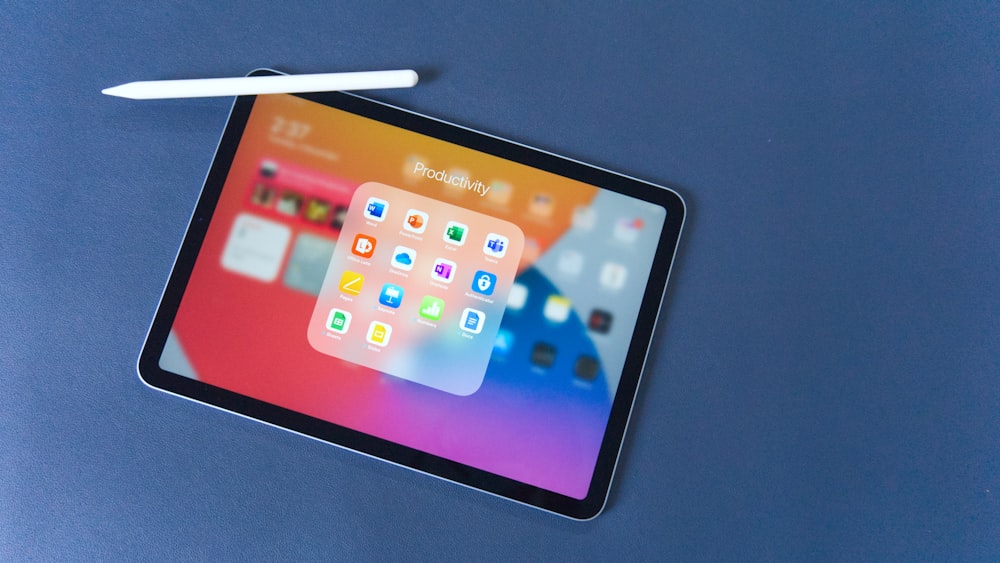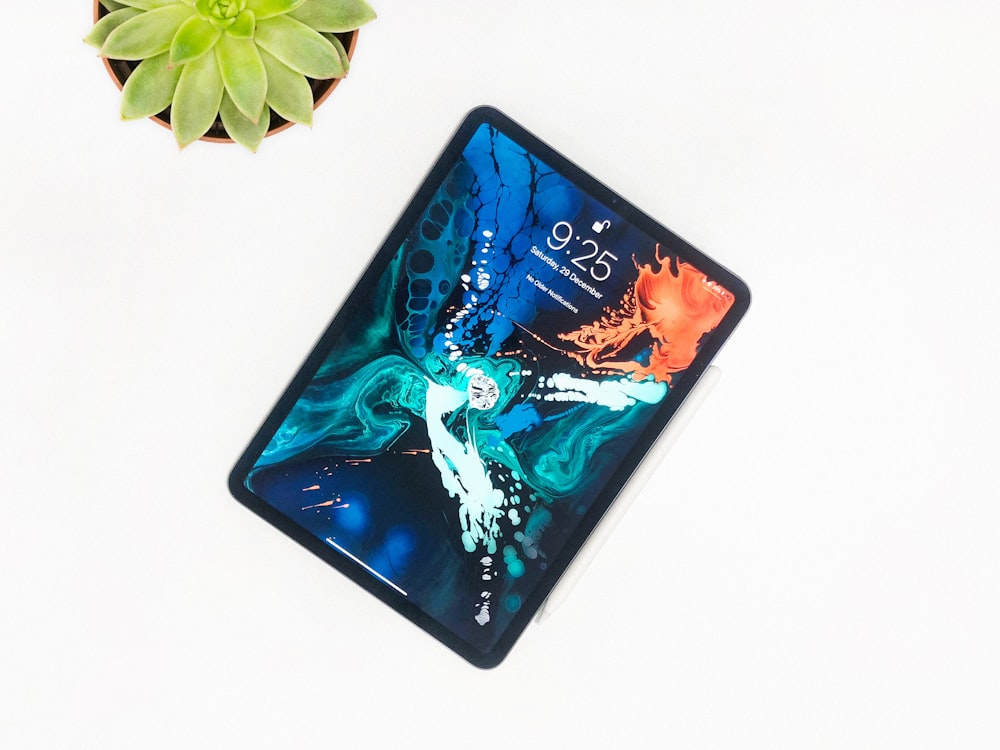There is a new addition to the iPad lineup. The ninth-generation iPad. Apple’s iPad lineup has never looked better. The ninth-generation iPad is undoubtedly a supremely solid tablet. Appl recently introduced the iPad Air and iPad Pro. They may look the same at first glance, but which is better for you: iPad Air vs iPad Pro?
Looking for an iPad that has more to offer than the base models? You can choose from the iPad Air and iPad Pro for your business needs. They may look the same, but they have a few key features that set them apart.
Get the iPad Air If You Are Looking at Saving Up Some Cash
The iPad Air’s features are somewhere in the center of Apple’s tablet series.
Key Features:
- 9-inch size with slim bezels
- 64GB storage
- Touch Sensor ID
- A14 processor
When it comes to performance and power, the iPad Air is not on the back foot. However, the A14 processor cannot match the iPad Pro’s M1 processor.
If you are not unduly bothered about the time your device takes to render and export videos, you will not have anything to complain about the iPad Air.
You will also love the speed at which the iPad Air opens apps. It easily handles split-screen apps, even when a third app is open on top. You can simultaneously stream Twitch videos in Picture in Picture mode and still enjoy the performance.
With the launch of Apple’s iPad Air, the company has signaled a change in its design approach. The thick bezels and the iconic home buttons have gone away. The border circulating the screen is also reduced in size. The addition of a Touch ID sensor has entrusted the sleep/wake button with double duty. The sensor recognizes fingerprints and unlocks the device.
The iPad Air also indicates a new approach by Apple in choosing colors. The device has bright color options. For those who adored the standard black, silver, and gold options, it is simply not there anymore.
A key feature seen in the iPad Pro and the iPad Mini but missing in the iPad Air is the centerstage front-facing camera. It has the capability to keep adding more people to the screen without removing your face from the shot. Your guess is as good as mine as to why this feature is conspicuous by its absence in the iPad Air.
The starting price is $599 for the Wi-Fi-only model and $729 for Wi-Fi and cellular model.
Get the iPad Pro if You Want Nothing but the Best
The opinion is unanimous among iPad users and technology experts. The iPad Pro 2021 version is the best from Apple so far. The key features:
- It comes with the M1 processor, which is also seen in the MacBook Air and 13-inch MacBook Pro
- It has two different display sizes, to full support for Thunderbolt 4 and faster data transfer speeds
- It runs on iPadOS (same as iPad Air) and does come with some software restrictions.
Users will instantly feel that the iPad Pro is less of a tablet and functions more like a computer. It comes with 16GB memory and 2TB storage, and all that will cost you $2,199. You will have to shell out an extra $200 for adding 5G connectivity.
The iPad Pro can easily replace your laptop. You benefit from a faster processor and the choice of two of the most extensive displays Apple offers in its iPad series. Pick up a compatible keyboard (Recommended: Apple’s Magic Keyboard), add the Apple Pencil, and have a wonderful experience.
The Screen Issue
The iPad Pro comes in two sizes. You can choose from an 11-inch model and a 12.9-inch model. The only difference between the two designs is the display size. You get the same internal specifications and the same set of accessories in both.
If you choose the 12.9-inch iPad Pro, you cannot use Apple’s Magic Keyboard – it’s tailor-made for the 11-inch iPad Pro. But that’s an insignificant difference. Apart from it, the two devices offer the same enhanced user experience. The screens are more extensive than what you will find on the iPad Air.
The 12.9-inch iPad Pro has extra screen real estate. It gives you more space to enjoy the split-screen apps. You will also enjoy the broad multitasking that comes with the iPadOS 15.
Apple’s iPad Pro starts at $799 for the 11-inch model or $1,099 for the 12.9-inch model. These are base model prices. They have 128GB of storage, but there is no cellular connectivity.
Understanding the Specs
The iPad Air (2022) and iPad Pro (2022) might seem identical at first glance. However, digging into their specifications reveals distinct differences.
The iPad Air flaunts a 10.9-inch Liquid Retina display, an M1 processor, 8GB RAM, and offers two storage variants – 64GB and 256GB. It also features a 12MP main camera and a 12MP ultra-wide FaceTime HD camera with Center Stage. For security, it relies on Touch ID, and its connectivity options include Wi-Fi 6 and Bluetooth 5.0. The iPad Air’s USB-C port supports up to 10Gb/s data transfer speeds.
On the other hand, the 11-inch and 12.9-inch iPad Pro models boast Liquid Retina and Liquid Retina XDR mini-LED displays respectively, both with ProMotion technology. Under the hood, they have the M2 processor, up to 16GB RAM, and offer a wider range of storage options – from 128GB to 2TB. Both Pro models feature a better camera system with a 12MP main camera and a 10MP ultra-wide camera, along with a LiDAR scanner. For secure access, they utilize Face ID. The Pro models also offer superior connectivity with Wi-Fi 6E, Bluetooth 5.3, and USB-C with Thunderbolt 3, supporting up to 40Gb/s data transfer speeds.
Evaluating Performance
When it comes to the digital devices that power our businesses and personal lives, the processor stands as the undisputed cornerstone. It’s the engine under the hood, setting the pace for speed, efficiency, and the seamless execution of tasks. In the context of Apple’s iPad lineup, the distinction between the iPad Air and iPad Pro in terms of performance is particularly noteworthy.
The iPad Air, equipped with Apple’s M1 chip, represents a significant leap in performance compared to previous iPad models. This processor, which also powers the MacBook Air and other Macs, brings desktop-class speed and power to the tablet format. Users can expect swift app launches, smooth multitasking, and a responsive overall experience, even when juggling demanding applications like photo and video editing software. For professionals and power users who require robust performance but are mindful of budget constraints, the iPad Air presents an attractive proposition.
However, the iPad Pro takes performance to the next level with the M2 processor. Building on the foundation laid by the M1, the M2 chip further refines speed and efficiency, offering faster graphics processing and improved energy efficiency. This makes the iPad Pro an ideal choice for users engaged in more resource-intensive tasks – think 3D modeling, complex graphic design projects, and high-resolution video editing. The difference in performance between the M1 and M2 might not be glaring during everyday tasks, such as browsing the web or streaming video, but it becomes apparent when pushing the devices to their limits.
For businesses and professionals contemplating long-term usage and future-proofing, the iPad Pro’s superior performance metrics offer a compelling advantage. The enhanced capabilities of the M2 processor ensure that the device remains relevant and powerful even as software requirements evolve and become more demanding. This longevity can be a critical factor in business settings, where the cost of regularly upgrading hardware can accumulate swiftly.
Additionally, the iPad Pro’s performance enhancements are not just about raw power. They also contribute to a more seamless user experience, with quicker load times, smoother animations, and less waiting around. For professionals for whom time is money, these improvements in efficiency can translate into tangible productivity gains.
In conclusion, while the iPad Air offers exceptional performance that will meet and exceed the needs of most users, the iPad Pro stands out for those who demand the utmost in power and future-readiness. Whether the additional cost is justified depends on your specific needs, workload, and how you anticipate those needs evolving in the coming years. If your work involves heavy graphical tasks or if you simply want the best performance available to stay ahead of software demands, the iPad Pro is the way to go. However, for everyday business applications, content consumption, and general productivity, the iPad Air offers robust performance at a more accessible price point, making it an excellent choice for a wide range of users.
Assessing Display Quality
Both the iPad Air and iPad Pro offer stunning visuals, but the Pro takes the lead with its ProMotion technology. This feature, exclusive to Pro models, provides a 120Hz refresh rate, delivering smoother and more responsive visuals. It’s especially noticeable during fast-paced actions like scrolling or gaming.
The quality of the display varies between the two iPad Pro models. The 11-inch variant shares the same Liquid Retina Display as the iPad Air, while the larger 12.9-inch version boasts a superior Liquid Retina XDR display based on mini-LED technology, offering brighter, more accurate, and crisper visuals.
Deciphering Storage Options
Storage capacity is a crucial consideration when choosing between the iPad Air and iPad Pro. The base iPad Air offers a modest 64GB, which might be insufficient for users handling large files like high-resolution videos. Upgrading to the 256GB variant raises the price closer to the base iPad Pro, which comes with 128GB storage.
However, if you need even more space, the iPad Pro is the only option, offering up to 2TB of storage. Remember that both iPads support external storage devices, although the Pro’s higher data transfer speed makes it more efficient at handling large files.
Comparing Authentication Features and Cameras
In terms of unlocking, the iPad Air uses a Touch ID sensor on the power button, while the iPad Pro uses the more reliable Face ID. Both methods are efficient, but some users might prefer the facial recognition technology of the Pro.
The camera systems also differ between the two devices. The iPad Air sports a single 12MP rear camera, while the Pro models boast a dual-camera system with a 12MP main camera and a 10MP ultra-wide camera. The Pro models also feature a LiDAR scanner, adding another layer of functionality for 3D imaging and AR experiences.
Exploring Apple Pencil Support
Both the iPad Air and iPad Pro support the second-generation Apple Pencil, a handy tool for note-taking and drawing. However, only the Pro models support Apple’s Hover feature due to their M2 processor. This feature shows a preview of where the Pencil’s tip will land on the screen when you hover it up to 12mm above, enhancing precision and enabling shortcuts.
The Final Verdict: iPad Air vs iPad Pro
When choosing between the iPad Air and iPad Pro, consider your budget, storage needs, and the performance required for your tasks. If you’re on a tight budget, the iPad Air offers excellent value, providing a balance of price, performance, and features.
However, if you can stretch your budget, the iPad Pro offers several advantages. The M2 processor’s performance gains, ProMotion display, Face ID, and Hover feature for Apple Pencil make it a worthwhile upgrade, especially for power users. Additionally, the Pro models offer more storage options, with the ability to go up to 2TB.
In the end, no matter which iPad you choose, you can rest assured that you’re getting a top-notch tablet from Apple’s lineup. Both the iPad Air and iPad Pro offer a powerful, sleek, and feature-packed experience that is sure to satisfy any user.
Conclusion
In the ongoing debate between the iPad Air and iPad Pro, the decision ultimately boils down to your specific needs, preferences, and budget considerations. Both devices offer a plethora of features and capabilities that make them standout options in Apple’s tablet lineup.
For those seeking a balance between performance and affordability, the iPad Air emerges as a compelling choice. With its solid performance powered by the M1 chip, sleek design, and versatile functionality, the iPad Air delivers a premium user experience without breaking the bank. Whether you’re a business professional looking for a reliable productivity tool or a creative enthusiast exploring digital art, the iPad Air holds its own in various scenarios.
On the other hand, the iPad Pro raises the bar with its unparalleled performance, cutting-edge technology, and pro-grade features. With the M2 chip at its core, the iPad Pro blurs the lines between tablet and laptop, catering to the needs of power users, creative professionals, and demanding workflows. From graphic design and video editing to data analysis and app development, the iPad Pro empowers users to push the boundaries of what’s possible on a tablet.
Of course, it’s essential to acknowledge the investment required for the iPad Pro’s top-tier performance. The premium price tag reflects the device’s advanced capabilities, premium materials, and innovative features. However, for those who prioritize performance, versatility, and future-proofing, the iPad Pro represents a worthy investment that can enhance productivity, creativity, and overall user satisfaction.
In conclusion, whether you opt for the iPad Air or iPad Pro, rest assured that you’re getting a top-notch device engineered to deliver exceptional performance, functionality, and user experience. Both tablets embody Apple’s commitment to innovation, quality, and design excellence, making them valuable tools for business, creativity, entertainment, and beyond. So, weigh your priorities, consider your workflow requirements, and choose the iPad that best aligns with your needs and aspirations. With either option, you’re poised to embark on a transformative journey of productivity, creativity, and digital empowerment.
iPad Air vs iPad Pro FAQs
What is the difference between iPad Air and iPad Pro?
The main differences between the iPad Air and iPad Pro lie in their performance, display, camera capabilities, and price. The iPad Pro typically features a more powerful processor, advanced display technology with a higher refresh rate, and superior camera features. It’s designed for users requiring high performance for professional tasks. Conversely, the iPad Air is a more cost-effective option with sufficient capabilities for everyday use and creative endeavors.
Why get an iPad Pro instead of Air?
Consider getting an iPad Pro if you need advanced features for professional work, such as graphic design, video editing, or 3D modeling. The iPad Pro offers higher processing power, a better display with ProMotion technology, and additional camera features like LiDAR scanning, making it suitable for intensive tasks and creative projects.
What are the disadvantages of iPad Air?
While the iPad Air is powerful in its own right, it lacks some features available in the iPad Pro, such as a higher refresh rate display, Face ID, and additional speakers. It may also have a slightly less powerful processor compared to the iPad Pro, which could be a disadvantage for users requiring top-tier performance.
Does iPad Pro or iPad Air have better battery life?
Both iPad Air and iPad Pro are designed to offer up to 10 hours of battery life for web browsing or video watching. However, actual battery life can vary based on usage, with more intensive tasks consuming more power. Generally, the difference in battery life between the two models is minimal.
Is the iPad Air really better?
The iPad Air can be considered better for users who seek a balance between performance and price. It offers many of the high-end features of the iPad Pro but at a lower price point. If you don’t need the advanced capabilities of the iPad Pro, the iPad Air provides excellent value.
What’s the point of the iPad Air?
The iPad Air is designed to offer a middle ground between the basic iPad and the high-end iPad Pro. It’s aimed at users who want a powerful device for everyday use and some professional tasks without the need for the top-tier features and price of the iPad Pro.
Why buy an iPad Air instead of an iPad?
You might choose an iPad Air over the basic iPad if you’re looking for improved performance, a better display, and additional features like compatibility with the Magic Keyboard and 2nd-generation Apple Pencil. The iPad Air offers a more modern design and faster processor compared to the standard iPad.
What is the best iPad for future-proofing?
For future-proofing, the iPad Pro is typically the best choice due to its advanced features, more powerful processor, and support for the latest accessories. It’s designed to handle more demanding tasks and updates, making it a better long-term investment.
What is the difference between iPad and iPad Pro?
The difference between the iPad and iPad Pro includes processing power, display technology, camera capabilities, and available accessories. The iPad Pro is aimed at professional users with its more powerful chip, smoother ProMotion display, and better camera system, while the standard iPad is designed for everyday use and lighter tasks.












